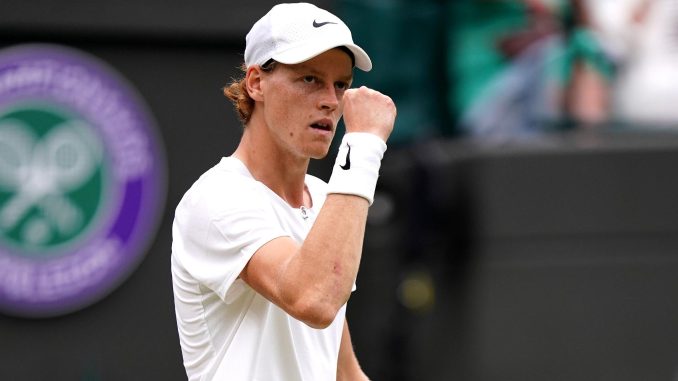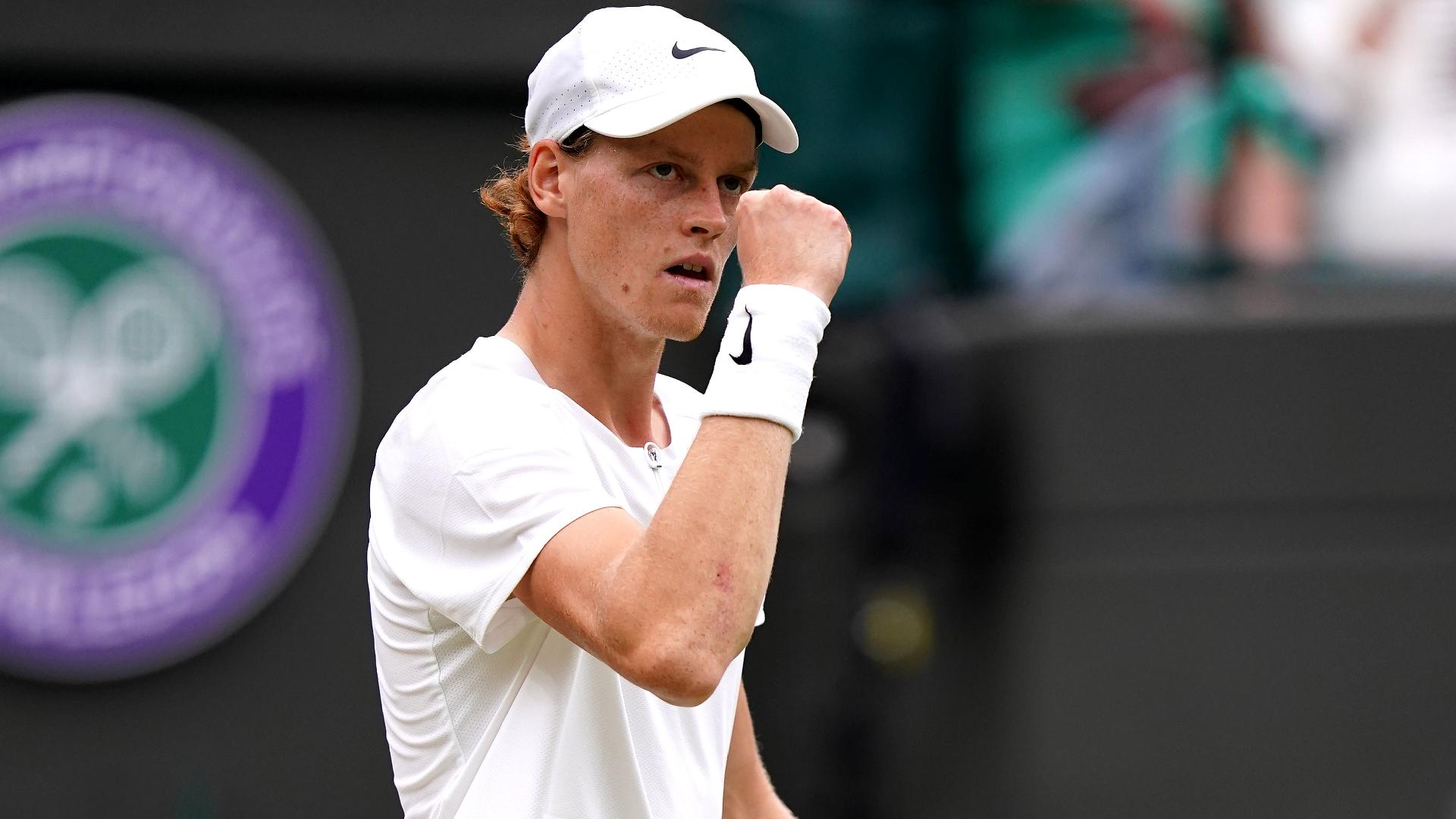
 Jannik Sinner, the rising Italian tennis star, has quickly become a force in the world of professional tennis. At just 23, he’s made an impressive ascent, regularly competing against some of the sport’s top players and achieving significant milestones. Recently, however, Sinner raised eyebrows with a candid remark about the financial realities of being a professional tennis player: “Tennis salary doesn’t pay my bills.” Sinner’s comment sheds light on a lesser-known facet of tennis – the financial pressures and economic limitations that even top players can experience. In this revealing statement, he joins other voices in the sports world who emphasize that, despite its glamorous perception, professional sports come with significant expenses and challenges.
Jannik Sinner, the rising Italian tennis star, has quickly become a force in the world of professional tennis. At just 23, he’s made an impressive ascent, regularly competing against some of the sport’s top players and achieving significant milestones. Recently, however, Sinner raised eyebrows with a candid remark about the financial realities of being a professional tennis player: “Tennis salary doesn’t pay my bills.” Sinner’s comment sheds light on a lesser-known facet of tennis – the financial pressures and economic limitations that even top players can experience. In this revealing statement, he joins other voices in the sports world who emphasize that, despite its glamorous perception, professional sports come with significant expenses and challenges.
Sinner’s Climb to the Top
Jannik Sinner was not born into a tennis dynasty nor did he start out on the path to tennis superstardom. Originally, his passion was skiing, a sport in which he showed potential at a young age. However, around the age of 13, he made the decision to switch from skis to rackets, a choice that required not only personal determination but also significant financial investment. Unlike team sports, where players often have salaries covered by clubs, tennis players face costs largely on their own. Equipment, coaching, travel, and other expenses accumulate quickly, especially for young players.
With little initial financial support, Sinner’s family invested a considerable amount of time and resources into his early training. His family and community made sacrifices to support his career ambitions, and today, as he looks back, he is well aware of the journey and the financial cost that brought him to the international stage. This background contextualizes his comments about the costs of his career, as he continues to shoulder financial responsibilities even as a top player.
The Reality Behind “Tennis Salary”
Sinner’s candid statement is a reality check on the financial aspects of tennis, especially for those who aren’t deeply familiar with the structure of the sport. For high-level players, income in tennis largely comes from tournament winnings, sponsorships, and endorsements. Unlike team sports, tennis has no set salaries or guaranteed income, which adds pressure to players who must constantly perform to maintain their earnings.
The costs associated with being a professional tennis player are substantial. Players like Sinner must cover training fees, hire coaches, pay for personal trainers, and travel to international tournaments, often with an entourage of support staff. In Sinner’s case, as someone who has steadily risen through the ranks and reached the upper echelons of the ATP Tour, these expenses are not insignificant. He must maintain a competitive edge, requiring a team of highly skilled professionals, frequent travel, and constant access to world-class facilities.
For many tennis professionals, only the players in the top tier – such as those regularly advancing to the later stages of Grand Slams or those with major endorsement deals – are making enough to cover both their expenses and secure financial stability. In fact, according to some analysts, tennis is one of the few sports where an athlete’s earnings are highly skewed. The disparity between what the top players earn and what lower-ranked players make is massive. It’s a factor that Sinner’s comment touches on, highlighting a reality that few outside of tennis truly understand.
Sponsorship and Financial Pressures
While Sinner does earn sponsorship revenue, he is still not among the highest-paid players on tour. Sponsorships can provide a safety net, yet they come with their own set of pressures. Endorsed athletes are expected to maintain a certain public image, promote products, and sometimes face obligations that can interfere with training or recovery schedules. Sinner’s rise in the rankings has undoubtedly attracted sponsorship attention, but it’s clear that even this doesn’t fully bridge the gap in his financial requirements. Endorsements fluctuate, dependent on both personal performance and market dynamics, making them an unstable income source for athletes like Sinner who are still working to cement their careers.
Additionally, Sinner’s statements suggest a potential tension between the need to stay focused on training and the pressure to take on sponsorship responsibilities for financial stability. The demands of competitive tennis mean that his primary focus needs to be on physical and mental preparation, not necessarily on marketability. But for many, endorsements have become crucial for covering expenses, further illustrating the financial complexities of a career in tennis.
Tournament Winnings and Financial Reality
Tournament earnings are one of the primary income streams for professional tennis players. However, the earnings from tournaments can be unpredictable. With each match, players risk injury or an unexpected loss that could result in lost income and future sponsorship opportunities. Even players with consistent performance face financial uncertainty due to the high volatility of tournament results and the cost of maintaining a competitive level.
To earn a substantial income, players must perform well consistently, reach advanced stages in tournaments, and stay healthy. An unexpected injury or a few disappointing matches can result in substantial financial strain, even for players like Sinner, who is already among the top-ranked players in the world. This competitive uncertainty exacerbates the pressure to perform, adding a new layer to Sinner’s comments. The costs, especially at the highest level, leave even accomplished players like Sinner in a position where they must plan carefully and manage financial risks.
The Economics of the ATP Tour
The ATP Tour, which governs men’s professional tennis, has implemented various changes in recent years to improve players’ earnings, particularly at lower ranks. However, income distribution remains skewed, with most prize money concentrated in the later rounds of major tournaments. For example, early exits at Grand Slam events yield significantly lower payouts, which can barely cover the travel expenses of top-tier players, let alone those trying to establish themselves on the circuit.
The economic structure of the ATP places considerable emphasis on performance, leaving players with a “winner-takes-most” environment. Sinner, along with other young players, has publicly recognized these financial strains. His statement may even point to a desire for a system that provides greater financial stability for all players, not just the elite few.
Sinner’s Future and the Future of Tennis
Sinner’s comment, “Tennis salary doesn’t pay my bills,” brings into focus the financial realities that can sometimes be overlooked in the sport. His rise through the ranks and his dedication to reaching the top of the game have required immense sacrifice, both personal and financial. As he continues to push boundaries in his career, his statement may resonate with other players who face similar challenges.
In the broader context, Sinner’s honesty highlights the need for reforms that could address the financial issues within professional tennis. Proposals such as better revenue sharing, increased prize money in early rounds, and expanded financial support for lower-ranked players could make the sport more financially sustainable for everyone.
While Sinner continues to battle on the court, his statement might just inspire a renewed conversation about the financial structure of tennis, benefitting future generations of players.
Leave a Reply